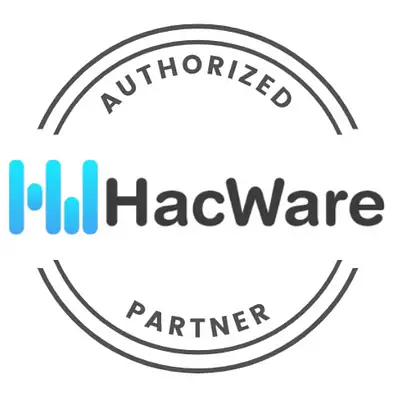Cybersecurity Awareness Training for Employees
Why do you need cybersecurity awareness training?
Cyber user training programs are arguably one of the best and most effective methods of cybercrime prevention. According to a study by IBM, human error is the main cause of 95% of cyber security breaches.
Emeritus’ automated cybersecurity awareness training program reduces phishing responses by 60%.

Prevent Financial and Reputational Loss
The financial loss and reputational costs that follow have a major business impact. The financial consequences of a data breach can hammer any size healthcare organization. As reported in the Cost of a Data Breach Report, “Companies with less than 500 employees suffered losses of more than $2.5 million on average – a potentially crippling amount for small businesses, which typically earn $50 million or less in annual revenue.” If the organization can stay afloat after the financial blow of a cyberattack, the cost of a damaged reputation will be just as hard to recover from.

Improve First Line of Defense
Hacking techniques and cyber security threats are always changing, but one thing that has remained the same over the last few decades has been the vulnerability of healthcare IT systems to these threats. The exponential rise in cybercrime has made having a Managed Security Service Provider a must for keeping protected health information (PHI) just that: protected. The best and first line of defense in any cybersecurity system is prevention. This is why cyber security awareness training for end users is key. With user error being the primary pathway to a data breach, educating employees on how they can help mitigate damages can help to drastically decrease the risk to your organization’s most sensitive data. They do this by understanding their responsibilities, learning how to be proactive, and recognizing potential dangers.

Increase End-User Awareness
The cornerstone of a good holistic cyber security training program is awareness. Without teaching this skill first, even the most comprehensive program will not be effective in the end user fight against cybercrime. The core elements of our training program includes:
- Business Impact Reporting
- Automated Personalized Phishing Simulations
- Performance Measurement & Reporting
- Human-Error Risk Assessments
- Costly Behaviour Measurements
- Outlook & Gmail Integrations
- Just-in-Time Micro Training
Our Automated Training Program Is Deployed To Your Users In Two Ways:
-
-
-
-
-
-
- Simulated Phishing
- Customized, Role-Based Training Courses
-
-
-
-
-
Our automated phishing simulations allow you to understand the vulnerabilities of your users in a safe and effective way. The program will develop a baseline of susceptibility, design customer training programs to address your organizations individual needs, and regular progress reports. Once the program has been deployed, it runs autonomously in the background providing your users with safe ways to show that they are aware of the latest cyber threats
Our training programs include videos and quizzes covering approximately 50 cybersecurity awareness topics that your employees need to know. From role-based modules such as payment fraud and PCI DSS compliance to general topics such as social media safety and password security, our training covers the full range of threats and vulnerabilities. Our training help your organization stay compliant with industry standards.







Cyber Awareness Training Topics
Payment Fraud
PCI DSS Compliance & Credit Card Management
Phishing
Malicious Links
Check Mobile Links
Password Security
Vishing Attack
Ransomware
Key Loggers and Banking
Password Managers
Social Media Awareness
Favorite Things Challenges
Smishing
Clean Desk Policy (CDP)
Eavesdropping
Remote Work Eavesdropping
Device Security
ScareWare
Phishing is, by definition, an attempt to get sensitive information (such as passwords and credit cards) from someone through email or chat. It is considered one of the most common strategies in a social engineering attack. One report found that 72% of organizations experienced downtime due to phishing using email-based cyber attack strategies.
Phishing attacks are often successful because hackers are becoming increasingly better at creating convincing fakes. They can replicate communications to appear very credible, resulting in the end-user believing it’s legitimate. It happens all too often. In fact, according to a 2018 article published in Reliable IT MSP, an alarming 88% of healthcare workers opened phishing emails. This seemingly simple and innocent action could result in a devastating cost to a mid-sized healthcare organization. Further studies also highlight the vulnerability of organizations in phishing attacks. The findings of a survey published in the KnowBe4 2021 State of Privacy and Security Awareness Report offered up this surprising stat, “out of all industry sectors, healthcare employees were the least aware of social engineering threats such as phishing and business email compromise (BEC), with only 16% of healthcare employees saying they understood those threats very well.”
These statistics reiterate just how crucial end-user awareness and education are in cyberattack prevention. Some tell-tale signs to focus on in phishing education training include emails containing links with a string of random numbers and letters, communications with a sense of urgency, or seemingly odd requests for information containing suspicious attachments. Intuition can play a big part in prevention. If something doesn’t feel right, question it.
An important piece of any cyber security prevention method is secure passwords. They are the gatekeeper to the IT infrastructures that contain the most sensitive and protected health information (PHI). There is a general list of best practices that end-users should employ when dealing with passwords.
- Passwords should be unique to each application, website, or online account. No two passwords should be the same for users with privileges to multiple IT platforms.
- Passwords should be at the very least eight characters long and contain letters, numbers, and special characters.
- Passwords are the strongest when they are randomly generated.
- Passwords should never contain any personally identifying information such as names, birthdates, or social security numbers.
- Passwords should be changed every six months, if not sooner.
- Use multi-factor authentication (MFA) when available to reduce the impact of a compromised password.
These best practices must be implemented by employees and required to maintain regular access to the data they need to perform their job functions. On the same note, management must implement a plan to ensure that employees are adhering to, and executing these practices regularly.
In this modern world of healthcare, every employee has a certain degree of access to IT systems within the organization. While privileges to protected health information vary depending on the position, being online is a large part of any job in healthcare, from administration to hands-on medical care. Because of this, cybersecurity is crucial. That is why practicing good internet safety needs to be a core part of the cyber user training program you employ.
Some important focal points of your program should include the following:
- Awareness in recognizing suspicious domains. Often, domain names will be one letter, number, or character off from a reputable site.
- Ability to recognize a secure connection vs an insecure connection and what to do if they come across suspicious activity or have questions.
- Beware of downloading untrusted or unauthorized software and entering protected credentials into these programs.
Cybersecurity Awareness Training for Employees
The findings of the survey published in a recent KnowBe4 State of Privacy and Security Awareness Report revealed that 24% of healthcare respondents said their employer had not provided any security awareness training. This is an alarming survey result as the healthcare sector is ranked as one of the top vulnerable targets in cybercrime. The survey also showed that healthcare employees were the least aware of social engineering threats such as phishing and business email compromise (BEC), with only 16% of healthcare employees saying they understood those threats very well. These findings highlight why organizations must invest in a comprehensive cyber security training program and require continued education in this area to keep employees abreast of the ever-changing threats of cybercrime.

